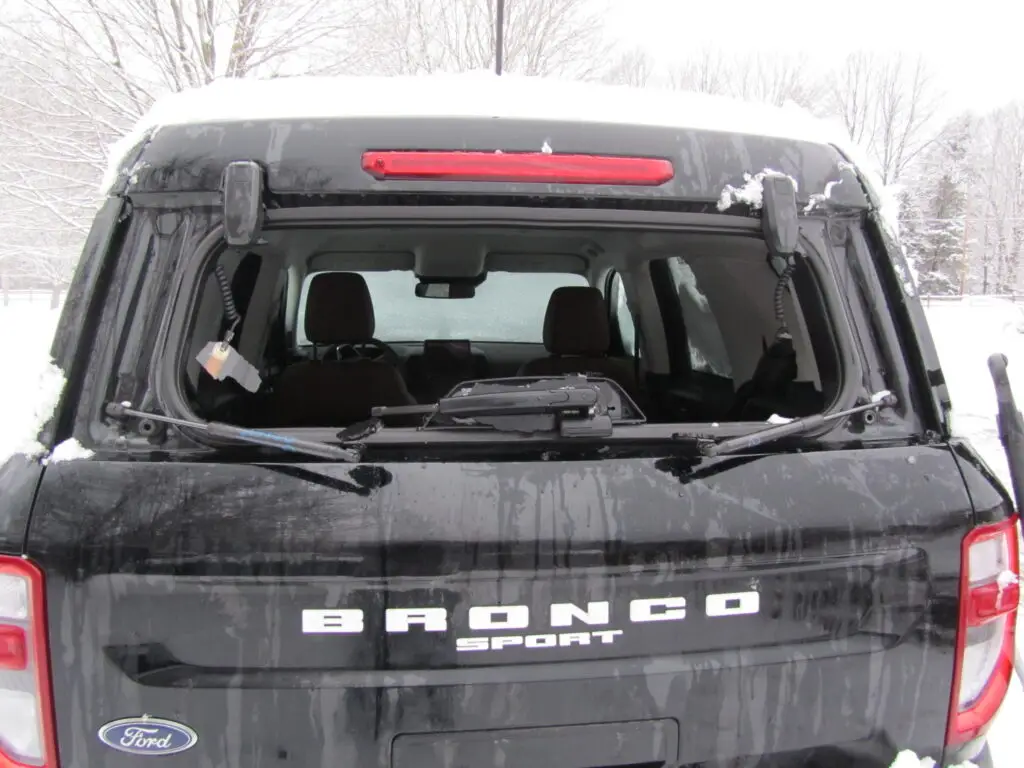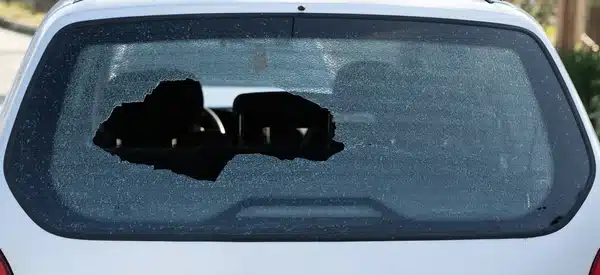
Rear Windshield Replacement Services
Rear Windshield Replacement in Phoenix Area
Replacing a rear windshield is generally a quick process.
In most cases, the entire replacement can be completed within about an hour. This timeframe can vary slightly based on the make and model of the vehicle, as well as the conditions under which the replacement work is being done. However, for the majority of vehicles, you can expect the process to be finished swiftly, often within the sixty-minute mark.
Rear windshield replacement is important for several reasons:
primarily related to safety, visibility, and the structural integrity of the vehicle:
- Safety: The back glass plays a crucial role in maintaining the structural integrity of the vehicle. In the event of a collision, it helps support the roof and prevents it from collapsing. A damaged or weakened back glass compromises the overall safety of the vehicle and its occupants.
- Visibility: Clear visibility through the back glass is essential for safe driving. Cracks, chips, or other damage to the back glass can obstruct the driver’s view, increasing the risk of accidents, especially when reversing or changing lanes.
- Protection from the Elements: The back glass provides protection from external elements such as rain, snow, wind, and debris. A damaged or missing back glass exposes the interior of the vehicle to these elements, potentially causing damage to the interior and discomfort to passengers.
- Security: Intact back glass is a deterrent to theft and vandalism. A damaged or broken back glass makes it easier for thieves to access the vehicle and its contents, posing a security risk.
- Vehicle Aesthetics and Resale Value: A vehicle with a damaged back glass may appear unsightly and decrease its resale value. The rear glass replacement restores the vehicle’s appearance and maintains its value, which can be important for resale or trade-in purposes.
Overall, back glass replacement is essential for maintaining the safety, functionality, and aesthetics of a vehicle. It ensures clear visibility, structural integrity, and protection from the elements, contributing to a safer and more comfortable driving experience.
How to Replace a Rear Windshield
Replacing a rear windshield is a precise process that requires professional skills and the right tools to ensure safety and functionality. Here’s a step-by-endpoint guide to understand how the replacement works:
Assessment of the Damage: Technicians begin by examining the extent of the damage to the rear windshield to determine the best course of action.
Removal of Broken Glass: The next step involves carefully removing the shattered or damaged glass from the car. This step must be done with caution to prevent any injuries or further damage to the vehicle.
Cleaning the Frame: After removal, the area is thoroughly cleaned to remove any small pieces of glass or debris. This ensures a clean surface for installing the new windshield.
Installation of New Glass: A new rear windshield is then carefully positioned and installed. Technicians ensure it fits perfectly without any gaps.
Checking Functionalities: They then check functionalities such as defrosting lines or any integrated technological features to ensure everything works as intended.
Final Cleanup and Inspection: The last step involves cleaning all the vehicle’s glass surfaces and a final inspection to ensure the job has been done correctly.
This meticulous procedure ensures your vehicle’s safety and restores its integrity.
How Common Is A Rear Backglass replacement?
Rear backglass replacements are not as common as windshield replacements but remain an essential service for auto glass shops. In most cases, rear glass damage is less frequent because rear windows face fewer direct impacts than front windshields. However, specific situations increase the likelihood of needing a rear backglass replacement. For example, rear glass is highly vulnerable in car accidents, where even minor collisions or fender benders can result in a shattered back window. Vandalism, such as break-ins, also frequently targets rear windows because they’re easier to access for entry.
The rear glass is usually made from tempered glass, which differs from the laminated glass used in windshields. Tempered glass shatters into small, pebble-like pieces on impact, rather than cracking, making it less repairable and more prone to complete replacement when damaged. Additionally, rear backglass often incorporates essential components like defroster lines and, in some vehicles, antennas. When damaged, these features can’t simply be repaired, as replacement of the entire backglass is necessary to restore functionality.
In regions with extreme weather, such as high winds, hail, or intense heat, rear glass replacements are more common. Temperature fluctuations can cause stress on the glass, making it more susceptible to breakage. In areas where hailstorms or debris from high winds are frequent, auto glass shops may see a rise in rear backglass replacements as well.
Overall, while rear backglass replacements are not as frequent as windshield replacements, they are a regular service within the auto glass industry. Auto glass shops that offer fast, high-quality rear glass replacements serve an essential role in maintaining vehicle safety, security, and functionality for drivers who experience rear window damage.

How Long Does It Take To Replace A Rear Back Glass?
Replacing a rear back glass typically takes between one to two hours, depending on the vehicle type, the extent of the damage, and any additional features like defroster lines or antennas. The process starts with carefully removing any broken glass pieces and cleaning the area thoroughly to ensure no fragments remain, which can take additional time if the glass has shattered extensively.
Once the damaged glass is removed, the technician will prepare the window frame, ensuring a clean and secure surface for the new glass. They’ll then install the new backglass using a specialized adhesive designed to bond quickly and securely. After installation, the adhesive usually needs some time to cure, though some fast-acting adhesives allow the vehicle to be safely driven shortly after the replacement. However, for the best results, it’s often recommended to avoid driving for at least an hour to let the adhesive fully set.
